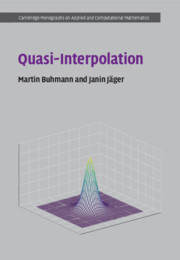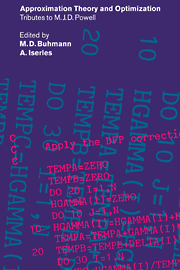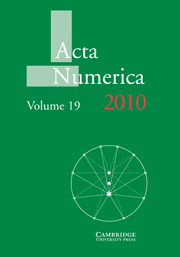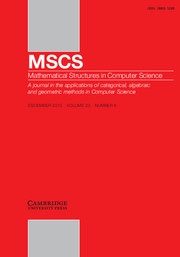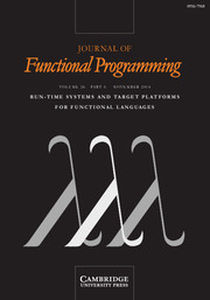Quasi-Interpolation
$94.00 (C)
Part of Cambridge Monographs on Applied and Computational Mathematics
- Authors:
- Martin Buhmann, Justus-Liebig-Universität Giessen, Germany
- Janin Jäger, Justus-Liebig-Universität Giessen, Germany
- Date Published: March 2022
- availability: Available
- format: Hardback
- isbn: 9781107072633
$
94.00
(C)
Hardback
Other available formats:
eBook
Looking for an examination copy?
If you are interested in the title for your course we can consider offering an examination copy. To register your interest please contact [email protected] providing details of the course you are teaching.
-
Quasi-interpolation is one of the most useful and often applied methods for the approximation of functions and data in mathematics and applications. Its advantages are manifold: quasi-interpolants are able to approximate in any number of dimensions, they are efficient and relatively easy to formulate for scattered and meshed nodes and for any number of data. This book provides an introduction into the field for graduate students and researchers, outlining all the mathematical background and methods of implementation. The mathematical analysis of quasi-interpolation is given in three directions, namely on the basis (spline spaces, radial basis functions) from which the approximation is taken, on the form and computation of the quasi-interpolants (point evaluations, averages, least squares), and on the mathematical properties (existence, locality, convergence questions, precision). Learn which type of quasi-interpolation to use in different contexts and how to optimise its features to suit applications in physics and engineering.
Read more- Provides an in-depth summary of approximations using quasi-interpolation
- Explains the advantages of several different approaches to quasi-interpolation, including different convergence properties, smoothness and precision of approximants
- Offers a large range of examples and practical applications of quasi-interpolants, including scattered data, uniform data, solving PDEs and data compression
Reviews & endorsements
'… the overall exposition and references make this book a potentially useful reference and an appropriate starting point for an advanced graduate student or researcher interested in studying the subject.' Edward J. Fuselier, MathSciNet
Customer reviews
Not yet reviewed
Be the first to review
Review was not posted due to profanity
×Product details
- Date Published: March 2022
- format: Hardback
- isbn: 9781107072633
- length: 300 pages
- dimensions: 250 x 175 x 21 mm
- weight: 0.66kg
- availability: Available
Table of Contents
1. Introduction
2. Generalities on quasi-interpolation
3. Univariate RBF quasi-interpolants
4. Spline quasi-interpolants
5. Quasi-interpolants for periodic functions
6. Multivariate spline quasi-interpolants
7. Multivariate quasi-interpolants: construction in n dimensions
8. Quasi-interpolation on the sphere
9. Other quasi-interpolants and wavelets
10. Special cases and applications
References
Index.
Sorry, this resource is locked
Please register or sign in to request access. If you are having problems accessing these resources please email [email protected]
Register Sign in» Proceed
You are now leaving the Cambridge University Press website. Your eBook purchase and download will be completed by our partner www.ebooks.com. Please see the permission section of the www.ebooks.com catalogue page for details of the print & copy limits on our eBooks.
Continue ×Are you sure you want to delete your account?
This cannot be undone.
Thank you for your feedback which will help us improve our service.
If you requested a response, we will make sure to get back to you shortly.
×
